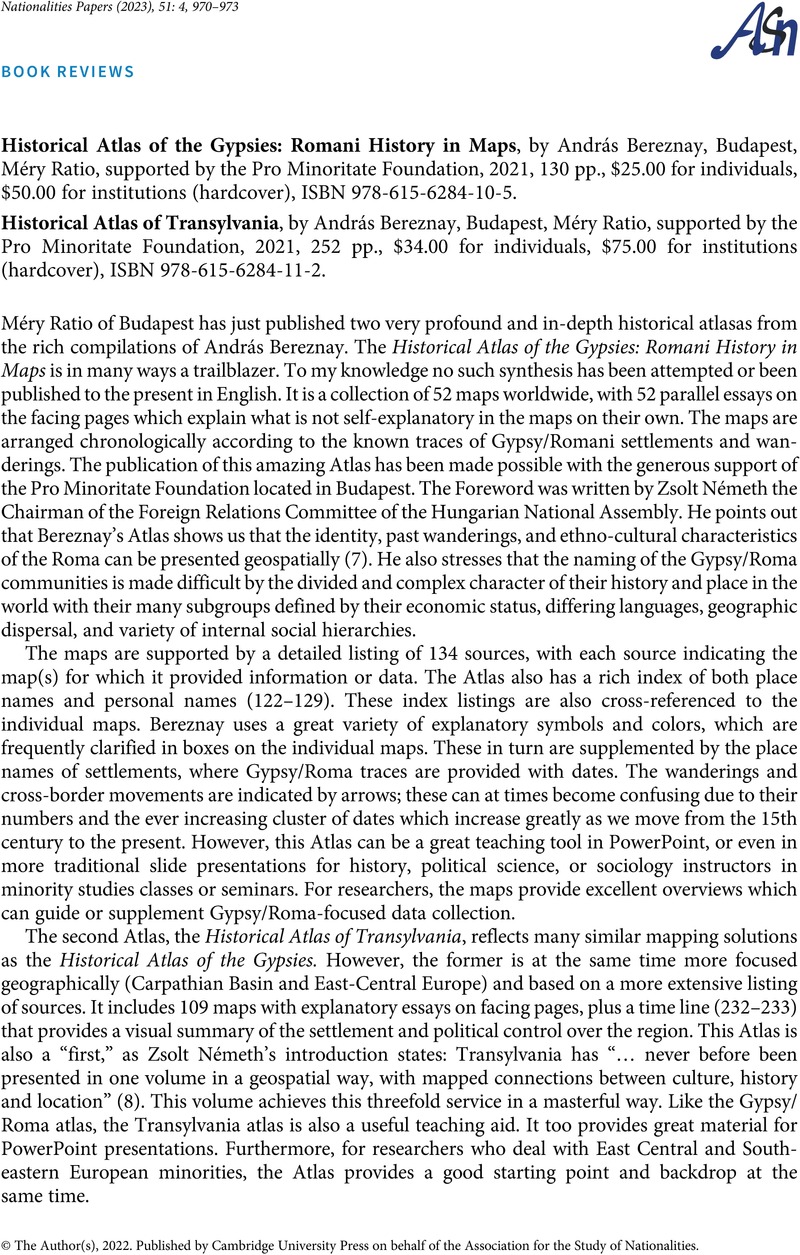No CrossRef data available.
Article contents
Historical Atlas of the Gypsies: Romani History in Maps, by András Bereznay, Budapest, Méry Ratio, supported by the Pro Minoritate Foundation, 2021, 130 pp., $25.00 for individuals, $50.00 for institutions (hardcover), ISBN 978-615-6284-10-5. - Historical Atlas of Transylvania, by András Bereznay, Budapest, Méry Ratio, supported by the Pro Minoritate Foundation, 2021, 252 pp., $34.00 for individuals, $75.00 for institutions (hardcover), ISBN 978-615-6284-11-2.
Review products
Historical Atlas of the Gypsies: Romani History in Maps, by András Bereznay, Budapest, Méry Ratio, supported by the Pro Minoritate Foundation, 2021, 130 pp., $25.00 for individuals, $50.00 for institutions (hardcover), ISBN 978-615-6284-10-5.
Historical Atlas of Transylvania, by András Bereznay, Budapest, Méry Ratio, supported by the Pro Minoritate Foundation, 2021, 252 pp., $34.00 for individuals, $75.00 for institutions (hardcover), ISBN 978-615-6284-11-2.
Published online by Cambridge University Press: 08 June 2022
Abstract
An abstract is not available for this content so a preview has been provided. Please use the Get access link above for information on how to access this content.

- Type
- Book Review
- Information
- Nationalities Papers , Volume 51 , Issue 4: Special Issue on Mass Mobilization in Belarus , July 2023 , pp. 970 - 971
- Copyright
- © The Author(s), 2022. Published by Cambridge University Press on behalf of the Association for the Study of Nationalities


